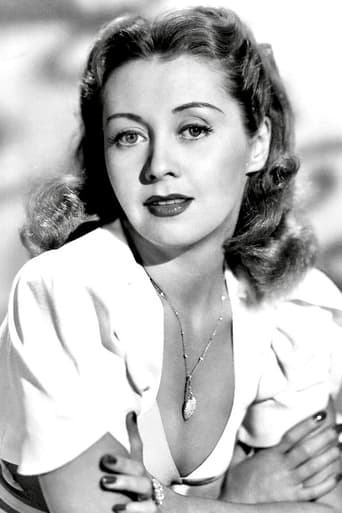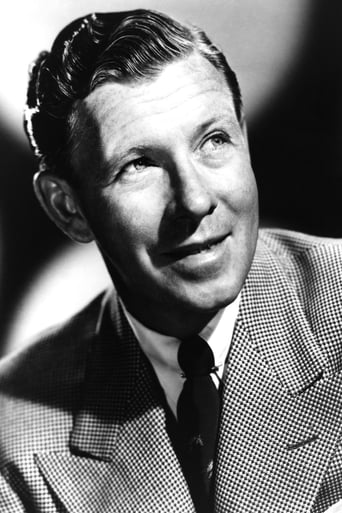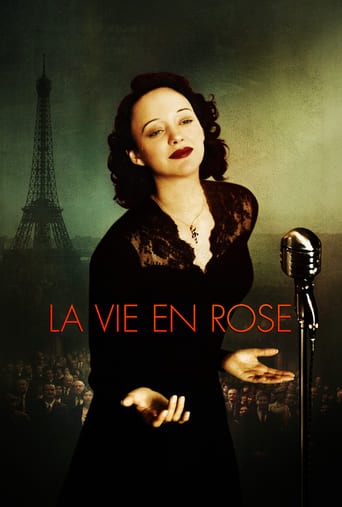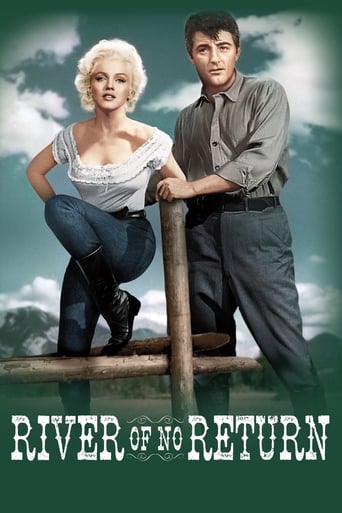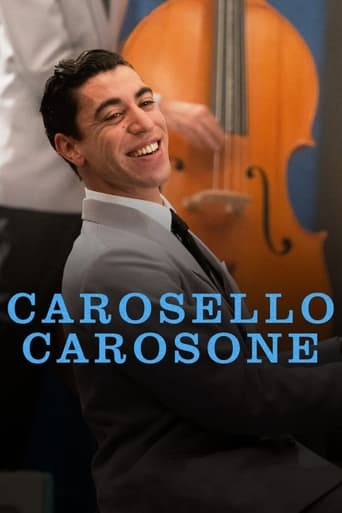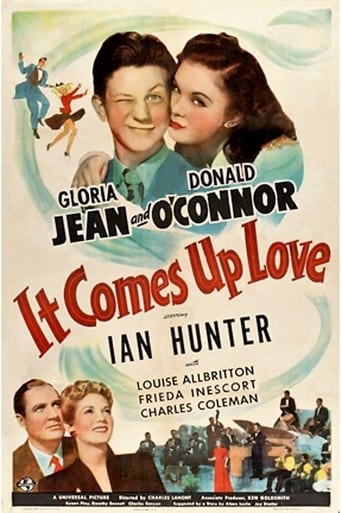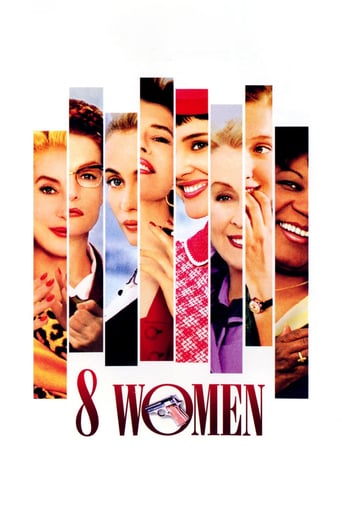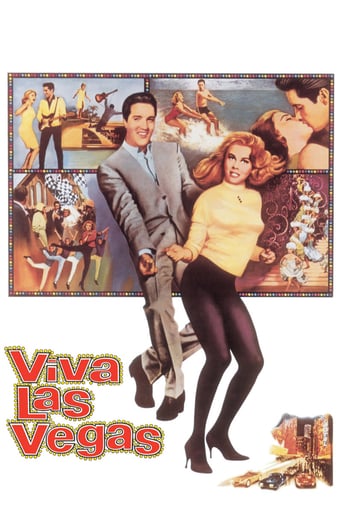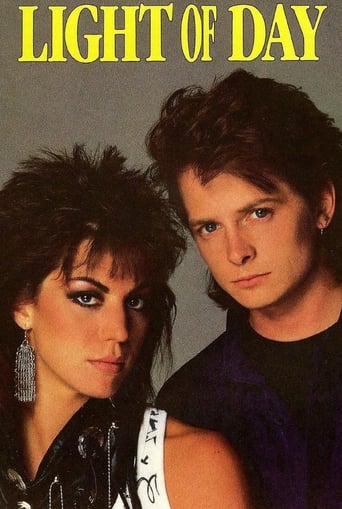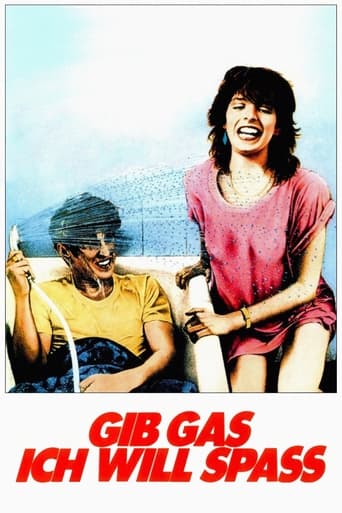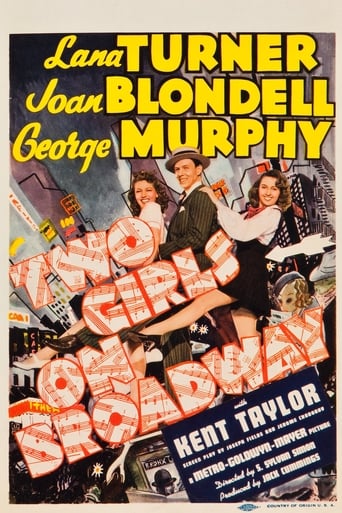
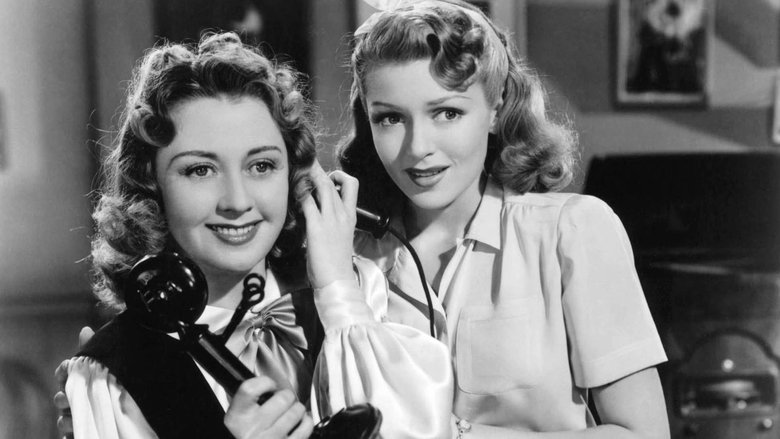
Two Girls on Broadway (1940)
Eddie Kerns sells his song to a Broadway producer and also lands a job dancing in the musical. He sends for his dance partner-fiancée Molly Mahoney who brings her younger sister Pat. Upon seeing Molly and Pat dance, the producer picks Pat for the show and gives Molly a job selling cigarettes. A wealthy friend of the producer named "Chat" Chatsworth also has his eye on Pat. Pat is teamed with Eddie in the specialty number as Kerns and Mahoney. Pat and Eddie soon realize that they are in love and must tell Molly. Pat balks at hurting Molly and goes out with Chat who already has five ex-wives.
Watch Trailer
Cast
Similar titles
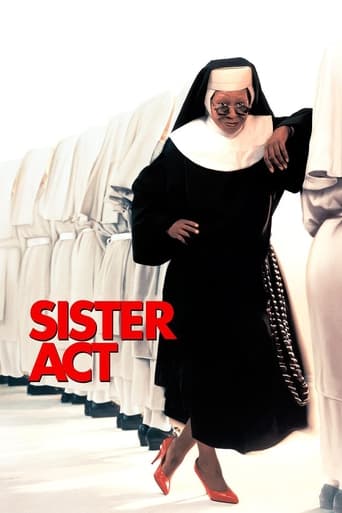
Reviews
Easily the biggest piece of Right wing non sense propaganda I ever saw.
Strong acting helps the film overcome an uncertain premise and create characters that hold our attention absolutely.
The joyful confection is coated in a sparkly gloss, bright enough to gleam from the darkest, most cynical corners.
An old-fashioned movie made with new-fashioned finesse.
I'll be honest, the main reason to watch this film is the gorgeous Lana Turner, who was just 19 years old when she starred in it. It's not her first film, but it was made just as her career was about to take off. Her acting is a little clumsy in places (as is George Murphy's), but it's a delight to see her dancing, and each of her close-ups. The story is a little thin, and has Joan Blondell and Turner as sisters, who come to New York to try to get jobs on stage with Blondell's slick-talking but affable fiancé, Murphy. Unfortunately, between the two of them, it's only Turner they want, and Blondell is relegated to selling cigarettes. Murphy tries to look out for Turner and shield her from a lecherous playboy (Kent Taylor), but then things get worse for Blondell when Murphy starts falling for Turner himself. There are some nice scenes of Blondell sacrificing herself with a brave face; she does the best she can with the material, and her character is a model of class. Unfortunately, there's also an extended scene with a Japanese butler that has some ugly racism on full display. The film wants to be a comedy, a romance, and a musical, and is pretty average at all three. It's concise at 73 minutes, and I liked seeing Turner and Blondell, but if those two aren't of interest, you should probably skip this one.
George Murphy (Eddie) gets his song and dance act into a New York Broadway show. He also wangles an audition for his fiancé Joan Blondell (Molly) and her kid sister Lana Turner (Pat). However, on seeing the audition, the show's director Richard Lane (Bartell) throws them a curve ball by accepting Lana as a partner for Murphy and relegating fiancé Joan to the role of cigarette girl, which she does quite well "Cigars and cigarettes!" Joan and Murphy had expected to resume as a dance team, but sister Lana has now been pushed to the forefront. Throw in some love complications and watch the film unravel itself in a rather extraordinary way.Wow, the plot of this story is insane. You have to feel sorry for Joan Blondell. Not only does she seem to be a better dancer than Lana, but she also has the security of a loving fiancé. She doesn't get much by the end of the film. There are funny moments, eg, Lana's relief that she has been sleeping in her clothes so that she doesn't have to bother getting dressed – an old student trick. However, there is also some seriously warped logic going on. Joan Blondell's sisterly attitude towards relationships just doesn't ring true, I'm afraid.The film is enjoyable, not for the stupid storyline, but for watching Lana Turner dancing her numbers. The studio was definitely looking for a copycat Astaire-Rogers partnership, and Lana definitely cuts it. How funny that Joan spends the film trying to fend her sister away from producer playboy Kent Taylor (Chat). Little did they all know that Lana (in real life) could seriously outplay him! The film has an ambiguous ending – I really hope that reporter Wallace Ford (Jed) made a visit to Nebraska as he said he would.
"Two Girls on Broadway" is a remake of "Broadway Melody". Considering that "Broadway Melody" was such an early musical (with rather primitive sound) it's not surprising that the studio would remake the film.The film begins with a young singer/songwriter (George Murphy) getting discovered. However, Eddie's a regular guy and he's sure to not only take this great job but make sure there's a job for his old sweetie, Molly (Joan Blondell), and her kid-sister, Pat (Lana Turner). Unfortunately, when Molly and Pat try out for the show, the producers like Pat but have no use for Molly. Molly, however, insists that Pat take the job and they give Molly a job as a cigarette girl. Now Pat and Eddie are poised for stardom...but what about nice-girl Molly? And what about Pat? The lecherous producer might just have his eyes on her...as does Eddie! So is the film any good? Well, it's pleasant and enjoyable--and with a few amazing sets which hark back to the original "Broadway Melody". As for the story, it is a bit old fashioned but the actors did a nice job and managed to make it work. Also, Blondell's character, Molly, is a HUGE improvement over the original film in which 'Hank' is very unlikable--whereas here, Molly is much more likable and you can understand Pat and Eddie's concerns about her--which makes the plot make more sense. Overall, not a great musical by any stretch but enjoyable if you like the genre and a slight improvement over the original.By the way, I did have to laugh about the subplot in the film where Eddie and Molly are worried that sweet, innocent Pat might get seduced by the playboy producer--a man who's been married several times. Lana Turner (Pat) in real life was married eight times (one of the husbands she married twice), so these concerns seemed a bit silly.
The revelation here is Lana Turner's dancing ability. Though she was known privately to be an excellent nightclub and ballroom dancer, Miss Turner rarely got the opportunity to demonstrate this ability on film.So, viewers take notice! Here, MGM were clearly still trying to determine in what direction they would develop the still young starlet, and were, therefore, consigning her to everything from Andy Hardy to Doctor Kildaire.In "Two Girls on Broadway," however, she is given an excellent opportunity to display her native rhythm and ability to shift tempo in the lavish production number, "My Wonderful One, Let's Dance." This number, is conceived and filmed, as a sort of hybrid between a Busby Berkely style extravaganza and the sort of routines Hermes Pan was designing for Astaire and Rogers at RKO.Thus, the number opens with George Murphy and Miss Turner depicted as bar patrons (with full chorus) before a curtain of black lame wherein Mr. Murphy croons the number to Miss Turner. Then the camera, (on a boom) pulls backward in a remarkable crane shot to reveal an enormous stage, and a rotating set equipped with steps, columns, enclosures and sliding walls.From this point on, Murphy and Turner execute a fast stepping variety of moods and attitudes, including lifts, spins, soft shoe, and ending with an electrifying series of conjoined pirouettes that concludes with Murphy both lifting and rotating Turner with thrilling speed to a racing orchestra.All told a dizzying feat that proves Miss Turner was fully capable of more than holding her own as a dancer, though I daresay most of her admirers would balk at relinquishing her from her throne as the queen of melodrama.

